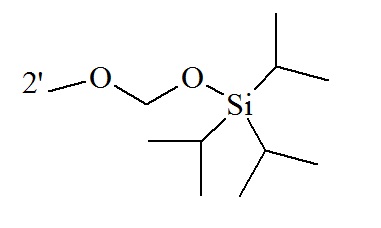An AP site (apurinic/apyrimidinic site), also known as an abasic site, is a location in DNA that has neither a purine nor a pyrimidine base. AP sites can also be found in RNA but with less frequency.
AP sites can be formed either spontaneously or due to spontaneous depurination, for example, due to DNA damage. AP sites can also occur as intermediates in base excision repair.
In RNA, AP sites affect RNA structure and activity. In DNA, AP sites are potentially mutagenic and lethal lesions that can block DNA replication and transcription.
AP sites are blocks to DNA and RNA polymerases; therefore their repair is essential for maintaining genome integrity. AP sites are repaired through the base excision repair (BER) pathway as well as via the nucleotide excision repair (NER) pathway.
AP sites are lesions in genomic DNA that readily undergo spontaneous and amine-catalyzed strand cleavage reactions. During these cleavage reactions, a 2,3-didehydro-2,3-dideoxyribose sugar remnant (3'ddR5p) at the 3'-terminus of the strand break is generated leaving an electrophilic α,β-unsaturated aldehyde residue embedded within the resulting nicked duplex. Cross-linked or nicked DNA duplexes generated via this reaction type can be studied by LC-MS/MS methods (Yang et al. 2017).
Synthetic oligonucleotides with rSpacer moieties are useful tools to study repair mechanisms in vitro. rSpacers are introduced during synthesis as phosphoramidites.

|

|
The 2’-O-TriisopropylsilylOxyMethyl (TOM) group is used in RNA synthesis because it allows very high coupling efficiencies along with fast and simple deprotection. The TOM-protection-group exhibits lower steric hinderance than the 2’O-t-butyldimethylsilyl (tBDMS) group. Fast and reliable deprotection is achieved using ammonimum hydroxide/methylamine (AMA) or methylamine in ethanol/water (EMAM).
|
Reference
AP sites:
https://en.wikipedia.org/wiki/AP_site
Boiteux S, Guillet M.; Abasic sites in DNA: repair and biological consequences in Saccharomyces cerevisiae. DNA Repair (Amst). 2004 Jan 5;3(1):1-12.
Nayun Kim and Sue Jinks-Robertson; Abasic Sites in the Transcribed Strand of Yeast DNA Are Removed by Transcription-Coupled Nucleotide Excision Repair. Mol. Cell. Biol. July 2010 vol. 30 no. 13 3206-3215.
TOM:
http://www.glenresearch.com/Technical/TB_RNA_TOM_Deprotection.pdf
http://www.glenresearch.com/GlenReports/GR16-13.html
Interstrand cross-links:
Yang Z, Price NE, Johnson KM, Wang Y, Gates KS; Interstrand cross-links arising from strand breaks at true abasic sites in duplex DNA. Nucleic Acids Res. 2017 Jun 20;45(11):6275-6283. doi: 10.1093/nar/gkx394. https://www.ncbi.nlm.nih.gov/pubmed/28531327
---...---